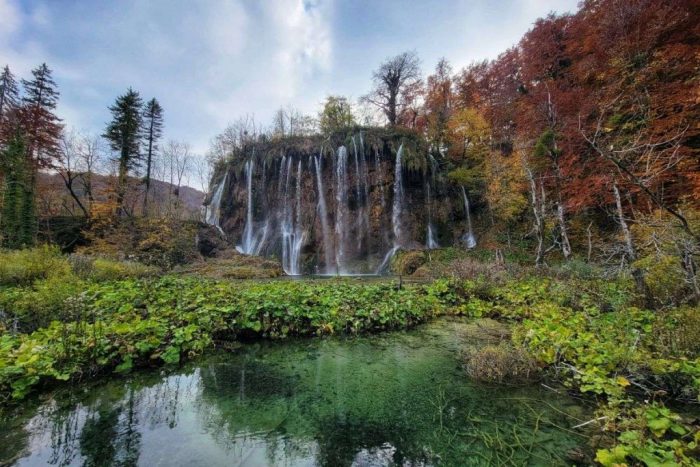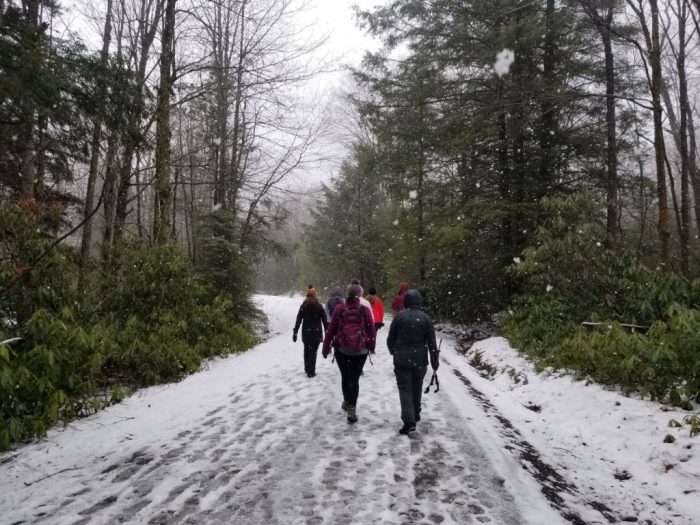The 7 Leave No Trace Principles Explained
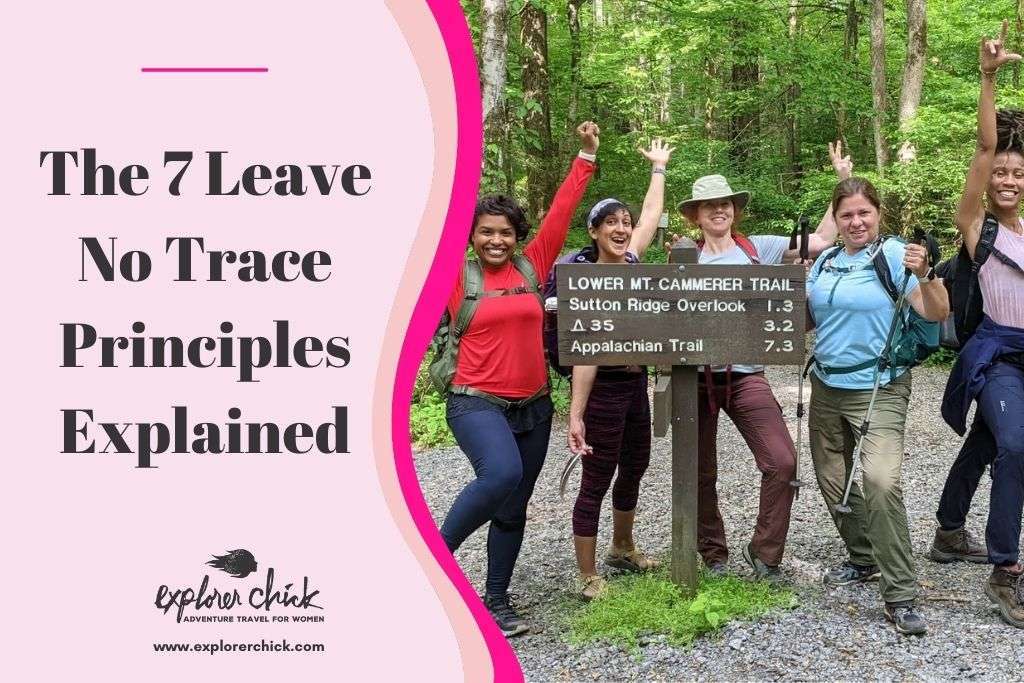
Leave No Trace is a set of seven outdoor ethics – guidelines designed to protect wildlife, minimize waste, and allow us to enjoy the natural world with the least possible impact.
Cool, crisp air. The damp, earthy smell of soil. Crunchy leaves of bright reds and oranges scattered across the forest floor and… what was that? A Kleenex pack, half-buried in dirt. A neon green lighter poking out from under a leaf just enough that you can see the Star Wars sticker on it.
In today’s world, it’s difficult to find areas of wilderness that have been left totally untouched by humans. National parks and other designated nature sites, though protected and maintained, are no exception. At Explorer Chick, we adhere to these seven principles for minimum impact outdoors, developed by the Leave No Trace Center for Outdoor Ethics.
What Is Leave No Trace?
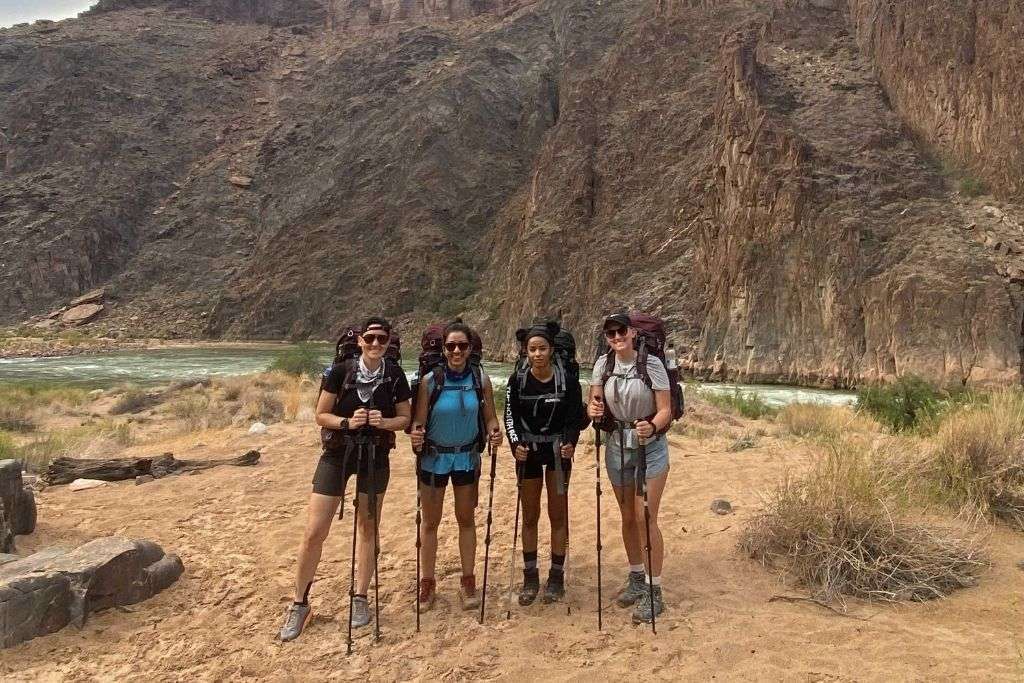
Leave No Trace is a set of guidelines to minimize our impact in the outdoors. We may not always realize it, but we humans are disruptive creatures. Loud voices, campfire impacts, litter, and erosion from hiking paths are all examples of how, consciously, or unconsciously, pristine areas are polluted.
By adhering to the seven principles of outdoor ethics, we can keep wildlife wild and ensure that nature’s sounds prevail.
Why Should I Follow the 7 Principles of Leave No Trace?
Just because we have the capacity to be disruptive, doesn’t mean that we must be. We know how to behave ourselves when we go to a fancy restaurant, so why can’t we learn similar guidelines with the great outdoors?
The truth is we all care about the environment and the outdoors. We all want to see and experience the outdoors as nature intended: wild and untouched. And yep, we all want others to experience that as well.
What Are the 7 Principles of Leave No Trace?
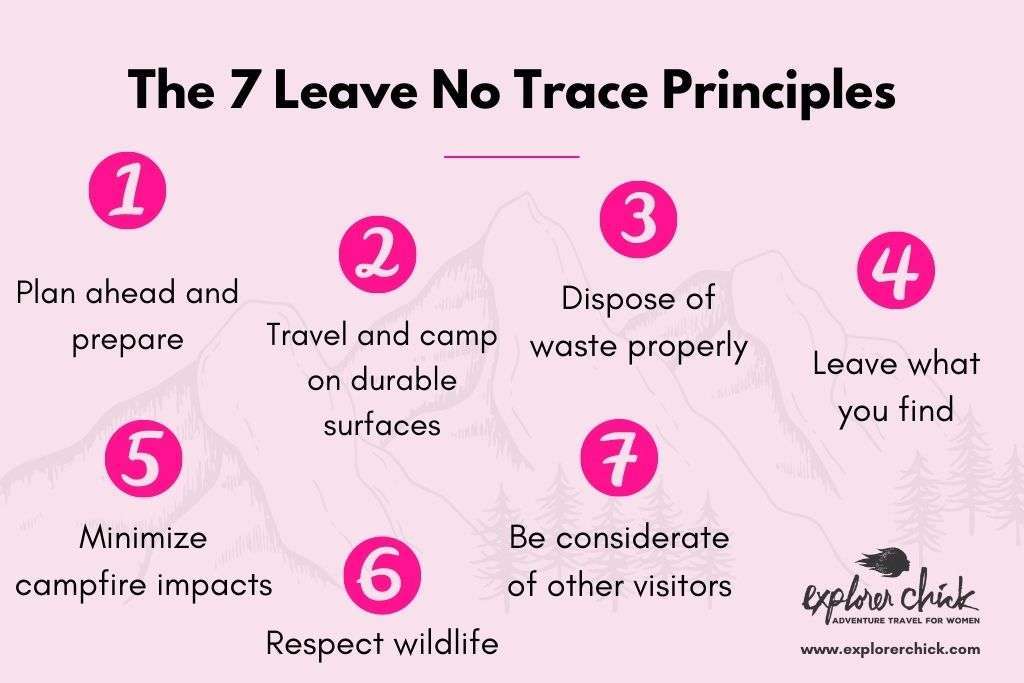
Each of the Leave No Trace principles offers a solution to seven aspects of human activity in the wilderness. Increased traffic at parks, trails, and campsites (especially during lockdown) puts a strain on these areas.
Though no one can be perfectly zero-impact in the wild, Leave No Trace is an easy way to find alternatives to specific activities.
1. Plan Ahead and Prepare.
Unless you’re Bear Grylls, you’ll need to plan ahead for a trip to your chosen site. This first step encompasses a myriad of tasks, like previewing the trail, checking weather forecasts and dressing accordingly, familiarizing yourself with the terrain and wildlife, and being aware of boundaries.
Additionally, many parks have special concerns and rules against what you can and cannot bring. Knowing what to expect is essential to having a safe, competent nature trek.
If you need help prepping to head to a certain park, check out some of our guides to places we travel:
- Best Time to Visit Yellowstone National Park
- Grand Canyon Backpacking Trips
- Guide to Hiking Smoky Mountains National Park
- Red River Gorge Backpacking Guide
2. Travel and Camp on Durable Surfaces.

We knew about cars causing damage to the environment, but did you know your footsteps can, too?
Don’t worry, your feet aren’t comparable to an interstate highway ramming through a forest, but it’s an impact all the same. Keeping to existing trails is essential to maintaining the vegetation that lives there. When large groups of hikers start to veer off the beaten path, sometimes the vegetation is irreversibly damaged. Queue erosion and ecosystem degradation — AKA a less pretty and wild place for everyone.
Campers, keep campsites small and use existing sites rather than creating your own. Using existing sites is both low-impact and more convenient, as they are usually settled on durable surfaces like rock or dry grasses.
3. Dispose of Waste Properly.
Between hygiene products, leftover food, and human waste, it’s hard to focus on immersing yourself in nature while the crumpled up Luna Bar wrapper reminds you otherwise.

Instead of racking your brain trying to figure out how to get rid of trash, a better option is to bring as little as you possibly can. What you can’t leave behind, use the following guidelines to dispose of waste properly.
- Food: Repackage food in your backpack and dispose of trash securely so that wild animals don’t find it. Clean up any spilled foods, scatter your dishwater, and stick to reusable containers when possible.
- Hygiene products: Biodegradable soap should be used for dishwashing and showers in the wilderness. Even though biodegradable soap is, well, biodegradable, you should still use the soap away from your main water source so the runoff doesn’t contaminate the source (i.e. a river or lake). Toilet paper and feminine hygiene products should be packed away and disposed of in a designated trash can.
- Human waste: Solid human waste can pollute bodies of water if not disposed of properly. Dig a small hole about half a foot deep, away from any water sources, and bury the waste inside (never bury toilet paper). Yes, like a cat. No, you don’t have to kick your feet to cover the hole. (But you do have to cover the hole.)
Related: How to Pee in the Outdoors
4. Leave What You Find.
Nature is a lot like a really big library. When you find a cool rock or a pretty flower, it’s unfair to those who come after you if you take it home and deprive other visitors of enjoying them, too. So let your eyes and camera do the appreciating, and leave rocks and other natural objects where you find them. Historic structures and cultural landmarks are another example of “look but don’t touch.”
Perhaps most importantly, be extremely careful to avoid introducing non-native species into the area. Organisms that seem harmless can sometimes have devastating effects on the careful balance that ecosystems strive to maintain.
5. Minimize Campfire Impacts.
Many nature sites do not allow campfires because of the “ground scars” and other effects it leaves behind. If you’ve double-checked with park rules and you’re set on building a campfire, do the following to minimize campfire impacts: use fire pans, established fire rings, or mound fires and keep the fires small. After the campfires completely burn out, scatter cool ashes all around.
If you can afford to do so, invest in a candle lantern or portable stove. Lightweight and easy to use, camping or emergency stoves are quiet and can be safely stowed away when you’re done.
6. Respect Wildlife.
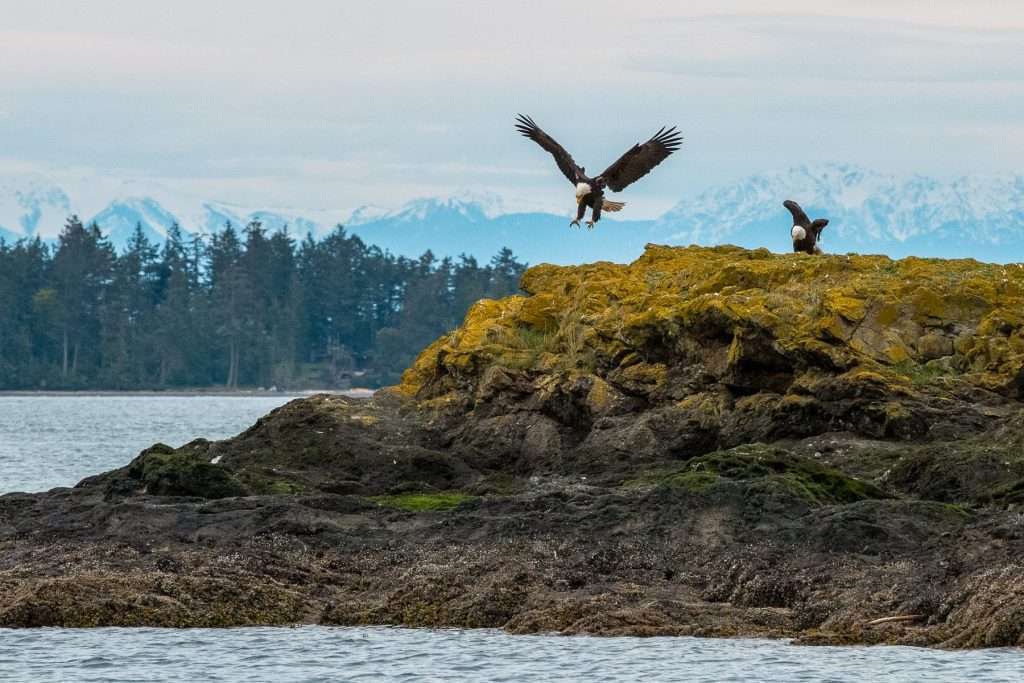
A perfect Instagram shot of a squirrel being fed a peanut à la Disney Princess is tempting, but the unfortunate reality is that feeding wildlife is a major risk to their wellbeing. Rest assured that none of the rabbits will starve. And they probably aren’t fond of Cheez-its anyway.
When in doubt about your own safety or the animal’s, simply avoid wildlife when possible. It can be hard to tell when even a small animal poses a risk to you or vice versa, so keeping away is always a safe bet. But animal lovers need not despair! Observe wildlife from a safe distance, be educated about different species’ behavior and characteristics, and you might just get your Disney Princess shot after all.
7. Be Considerate of Other Visitors.
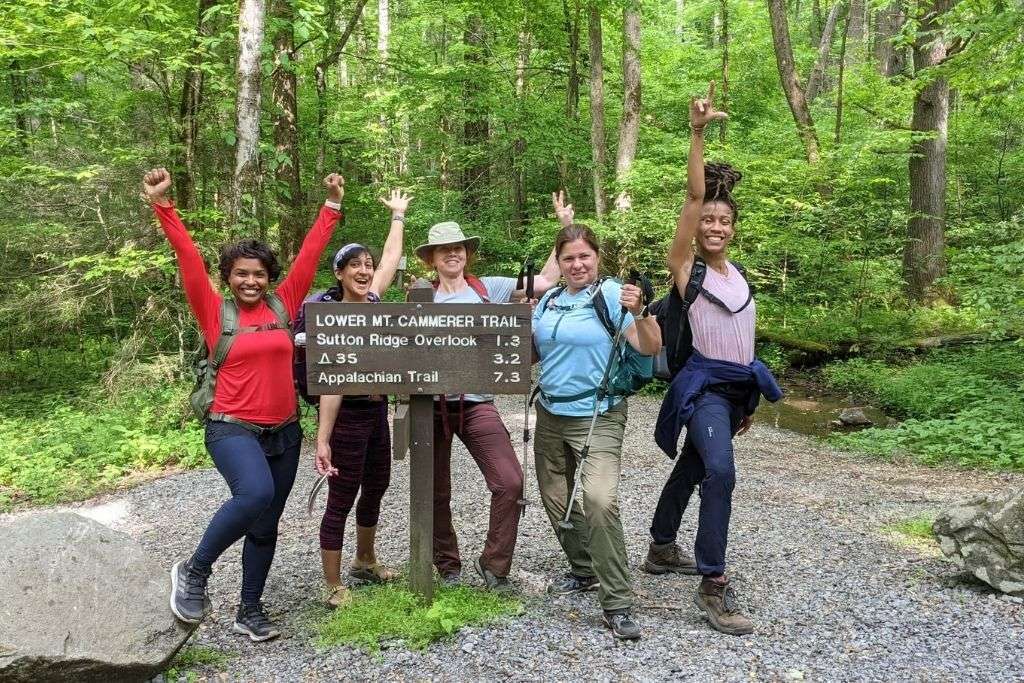
Nature can be crowded sometimes, so when you encounter other visitors, respect their space. Walk single file on trails to make room for other users. Avoid loud voices—you never know who is meditating nearby.
Oh, and let’s not forget about music on the trail. Yes, sometimes we need an little extra encouragement from our favorite playlist. Or maybe your group hiking and it’s a party. But playing your music for everyone to hear is violating Principle 7. Pack some headphones so others can enjoy the serenity of Mama Nature.
So, as we do our best to practice outdoor ethics, let’s be sure we’re practicing it out of love for the outdoors and a wish for everyone to be able to experience it.
How to Get More Leave No Trace Training
The Leave No Trace Center offers training and courses to those interested in protecting nature and wildlife while enjoying the outdoors.
Sign up for our Red River Gorge Backpacking Workshop Weekend or Virginia Hiking and Survival 101 to learn best practices hands-on.
Meet the Writer

Sarah John
Sarah John is a freelance writer and world traveler passionate about preserving historical and natural landmarks. She has a knack for eccentric travel itineraries and uncovering stories wherever she goes. When she’s not documenting her adventures online or painting landscapes in her travel journal, you can find her cozied up with a strong cup of coffee, an archaeology book, and her two cats, Fifi and Juniper.
Learn More Camping Tips
- How To Keep Your Feet Warm During Winter Hikes
- What To Wear Hiking In Hot Weather
- Best Campsite Lighting Ideas for Your Next Trip to the Woods
- How to Identify Poison Ivy (And How to Treat an Allergic Reaction)
- Going for a Hike? Here’s the Best Hiking Clothes for Women
- Best Mosquito Repellent for Camping, According To Our Guides
- Review: Kula Cloth, The Antimicrobial Pee Cloth For Hiking
- Review: Garmin inReach Mini

